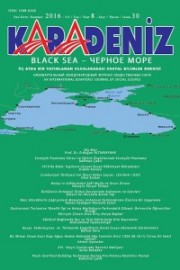SOĞMATAR’DA SUNAKLI KAYA OYUĞU MEZARLAR
ROCK-CUT TOMBS WITH ALTAR IN SOĞMATAR
Author(s): Semih Mutlu, Süheyla İrem Mutlu, Yusuf Albayrak, Bahattin ÇelikSubject(s): Archaeology, Cultural history, Historical Geography, Ancient World
Published by: Kültür Ajans Tanıtım ve Organizasyon
Keywords: Soğmatar; Necropol; Rock-cut; shaft grave; Altar; Early Bronze Age;
Summary/Abstract: Rock-cut shaft graves tradition which is dated to Early Bronze Age was found in Northern Syria, in the Middle Euphrates Valley, Tishrin Dam has been discovered also in several settlements in Anatolia up to now. In the archaeological excavation in the Soğmatar Necropolis up to the present date, fifthy rock-cut shaft graves which are dated to Early Bronze Age, were uncovered. Five of these types of graves are much more important in terms of having an altar, terrace, niche and carved into the rock elaborately. As a matter of fact, it’s considered that the graves do not show local culture characteristics, they show cultural reflections of the commercial spread towards the Middle Euphrates Region in the Early Dynasties III / Akkadian Period, which do not show local culture. It is thought that this type of carefully carved rock-cut shaft graves belongs to an elite group showing trade and cultural relations with Southern Mesopotamia. Although this type of tombs are seen throughout the Early Bronze Age in the Eastern Mediterranean, it is known that during the last century of the third millennium BC it became widespread during the Early Bronze Age.
Journal: Karadeniz Uluslararası Bilimsel Dergi
- Issue Year: 2019
- Issue No: 41
- Page Range: 263-274
- Page Count: 12
- Language: Turkish

